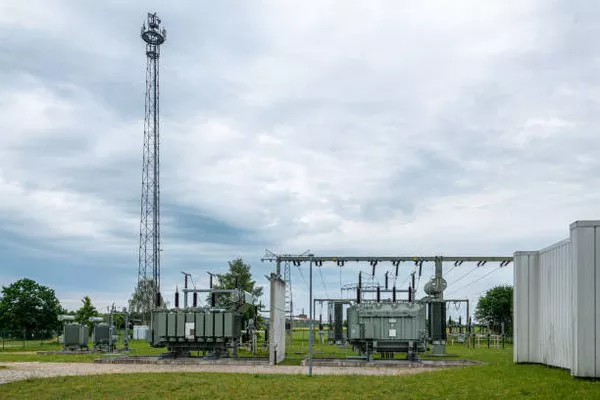Substations are vital hubs within the electrical power grid, facilitating the transformation, distribution, and control of electricity. To ensure the safety and efficiency of these operations, various devices and components are employed, including transformers, circuit breakers, relays, and meters. Among these, potential transformers (PTs) play a crucial role in voltage measurement and monitoring within substations. In this article, we will explore what potential transformers are, their significance in substation operations, and the different types and applications of PTs.
What Is a Potential Transformer?
A potential transformer, often abbreviated as PT, is a specialized type of transformer used primarily for voltage measurement and protection applications in substations and power systems. PTs are sometimes referred to as voltage transformers (VTs) because their primary function is to transform high voltage levels to lower, safer levels suitable for measurement and protection devices.
The primary purpose of PTs is to provide a reduced, scaled-down voltage output that accurately represents the voltage on the high-voltage side of the power system. This reduced voltage output is proportional to the primary voltage and is used as a reference for metering, monitoring, and controlling the power system. PTs ensure the safety of personnel and equipment by enabling the accurate measurement of voltage and facilitating the proper functioning of protective relays and other control devices.
Significance in Substation Operations
Potential transformers are indispensable components in substation operations for several key reasons:
Voltage Measurement: PTs are primarily used for accurate voltage measurement. They convert high primary voltages, typically ranging from 110 kV to 765 kV in transmission substations, to standardized, lower secondary voltages (e.g., 120V or 240V) suitable for instruments and meters. This precise voltage measurement is essential for monitoring system performance, billing purposes, and maintaining grid stability.
Protection and Control: PTs are crucial for the operation of protective relays and control devices within substations. Protective relays use voltage signals from PTs to detect abnormal voltage conditions such as overvoltage or undervoltage, which may indicate faults or disturbances in the power system. In response, these relays trigger protective actions, such as opening circuit breakers to isolate faulty equipment and protect the integrity of the grid.
Metering and Billing: PTs are an integral part of metering systems used for billing purposes. Accurate voltage measurements provided by PTs ensure that customers are billed correctly for their electricity consumption, promoting fairness and transparency in the utility industry.
Types of Potential Transformers
Potential transformers come in various types, each designed for specific applications and voltage levels. The three main types of PTs are:
Electromagnetic Potential Transformers: These traditional PTs use an iron-core magnetic circuit to transform voltage levels. They are suitable for applications with low to medium voltage levels and are commonly used in distribution substations and industrial settings.
Capacitive Potential Transformers: Capacitive PTs employ a capacitive voltage divider to reduce voltage levels. They are typically used for high-voltage applications in transmission substations and offer advantages like compact size and low maintenance requirements.
Inductive Potential Transformers: Inductive PTs use an inductive coil arrangement to achieve voltage transformation. They are primarily used for medium to high-voltage applications and offer good accuracy and stability.
Applications of Potential Transformers
Potential transformers find diverse applications in substations and power systems:
Metering and Billing: PTs are used to measure voltage accurately for billing purposes. Utilities use them to calculate the energy consumption of customers and determine electricity costs.
Protection and Control: PTs play a vital role in power system protection. They provide voltage signals to protective relays, enabling rapid detection and isolation of faults to prevent damage to equipment and ensure grid stability.
Monitoring and Diagnostics: PTs help monitor the health of power system equipment by providing continuous voltage measurements. Any deviations from normal voltage levels can indicate potential issues, allowing for timely maintenance and repairs.
Synchronization: In power plants and substations, PTs are used to synchronize generators and ensure that they are operating in phase with the grid. This synchronization is essential to prevent grid disturbances when connecting or disconnecting generators.
Voltage Regulation: PTs are essential for voltage regulation and control. They help maintainthe voltage within acceptable limits by providing feedback to voltage control devices and regulators.
Conclusion
Potential transformers are indispensable components in substations and power systems, serving critical functions such as voltage measurement, protection, control, and monitoring. These devices play a crucial role in ensuring the safety, reliability, and efficiency of electrical power generation and distribution. Understanding the significance of potential transformers and their various applications is essential for maintaining the integrity of the power grid and delivering electricity to consumers reliably. As technology continues to advance, the role of potential transformers in substation operations will remain pivotal in safeguarding our electrical infrastructure.

